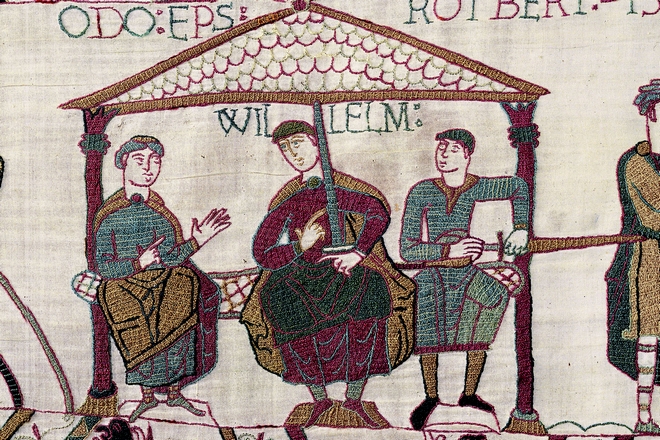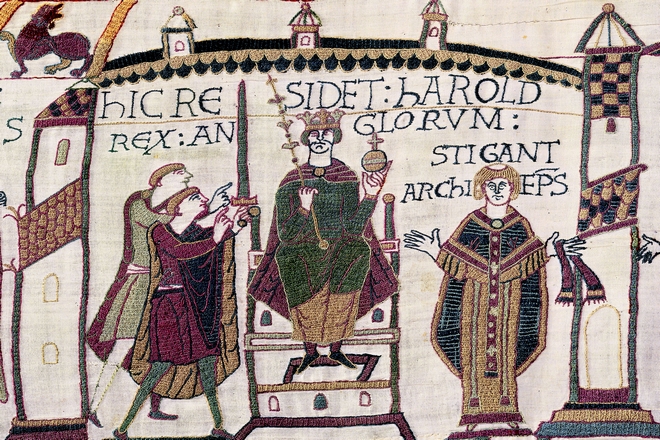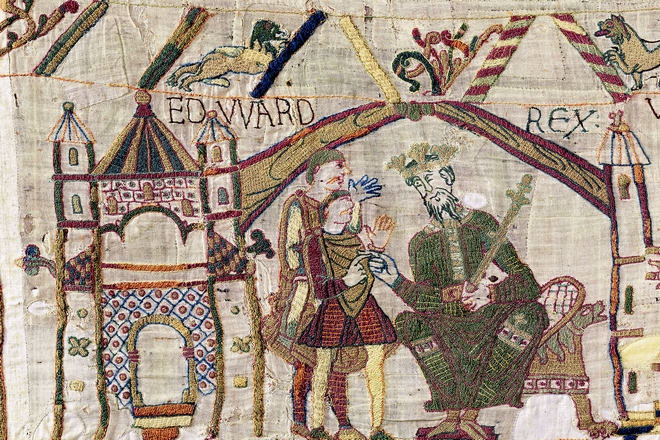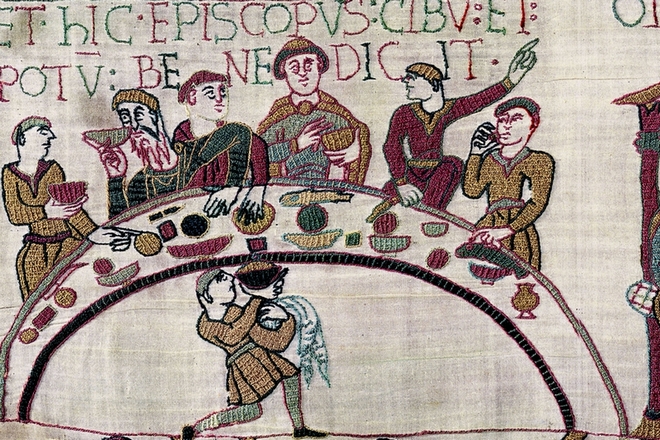
Share
Among the many characters included in the Bayeux Tapestry, most of whom are men, those shown the most are William, Duke of Normandy, Edward the Confessor, King of England, Harold Godwinson, Count of Wessex and Odo de Conteville, half-brother of William and Bishop of Bayeux. To make it easier to recognise the characters, the artist added distinctive features such as moustaches and long hair for the Anglo-Saxons and short hair for the Normans. Odo is recognisable as a man of the Church from his tonsured head.

William, seventh Duke of Normandy, is the main protagonist in the story as told by the Tapestry. Named the Conqueror after his coronation in England on 25 December 1066, he was one of the most powerful monarchs in Western Europe during the Middle Ages. Born in Falaise in 1027, he was the illegitimate son of Robert the Magnificent, Duke of Normandy, his illegitimacy earning him the nickname William the Bastard. He succeeded his father in 1035, when he was only 8 years old. In 1050 he married Matilda, the daughter of Count Baudouin V of Flanders, a distant cousin. He died in 1087 at the age of 60.

At the beginning of the story told in the Bayeux Tapestry, the elderly Anglo-Saxon King Edward the Confessor is sitting on his throne, talking to Harold (1022-1066), his brother-in-law from the powerful Godwin family of Wessex. By the end of Edward’s reign, Harold had gradually become the strong man of England and the standard-bearer of those opposed to the Normans. On 6 January 1066, Harold was crowned King in place of William of Normandy. On the 14 October 1066, at Hastings, as battle was raging against the troops of William, who had come to reclaim his throne, Harold was killed in combat after being hit in the eye by an arrow, a symbol of punishment for his act of perjury.

King Edward, known as the Confessor because of his great piety, was the son of the Anglo-Saxon King Ethelred II and of Emma, William’s great-aunt. He was crowned in 1042 and married Edith, daughter of the Count of Godwin and his Danish wife Gytha, as a way of seeking reconciliation with the Anglo-Danish clan. He remained very attached to Normandy, where he had spent 30 years in exile, when he was banished by the Danish conquerors. In 1064, in England and still childless, Edward naturally turned to William, his first cousin once removed, to succeed him on the throne. So he decided to send his brother-in-law Harold to Normandy to deliver his message to William…

Odo is one of the characters who is named several times in the Bayeux Tapestry. Odo and William the Bastard had the same mother, and Odo owed his appointment as head of the Bayeux diocese in 1050 to William. Loyal to the Duke, he took part in the plans to invade England and fought alongside his half-brother during the Battle of Hastings. It is generally supposed by historians that Odo had the Bayeux Tapestry made to embellish his new cathedral at its consecration in 1077. Exhibiting the Tapestry in a consecrated building provided legitimacy for the Norman conquest of England.
Amidst the predominantly male cast depicted in the Bayeux Tapestry, the most frequently represented protagonists include William, Duke of Normandy; Edward the Confessor, King of England; Harold Godwinson, Earl of Wessex; and Odo of Conteville, William’s half-brother and Bishop of Bayeux.